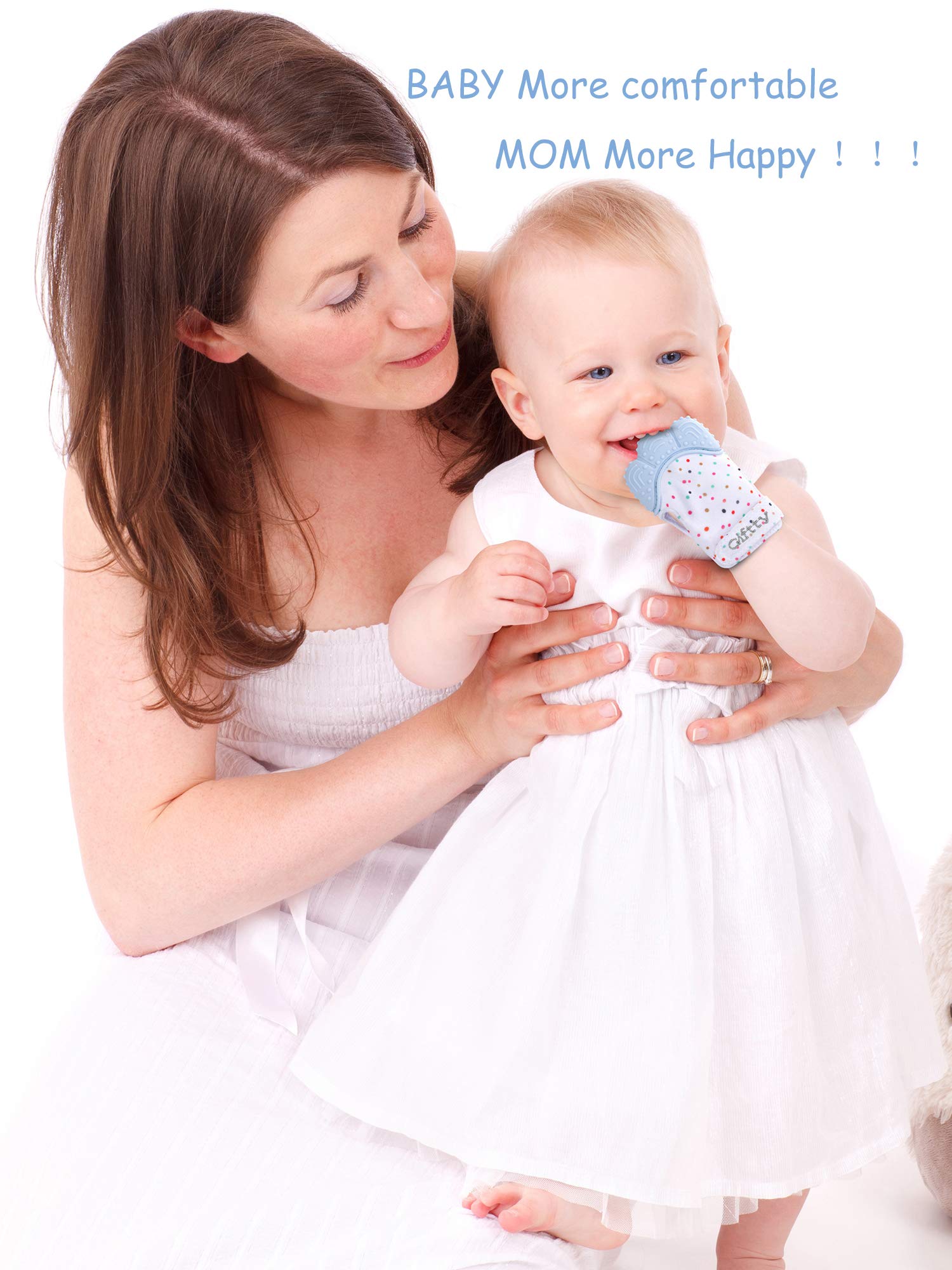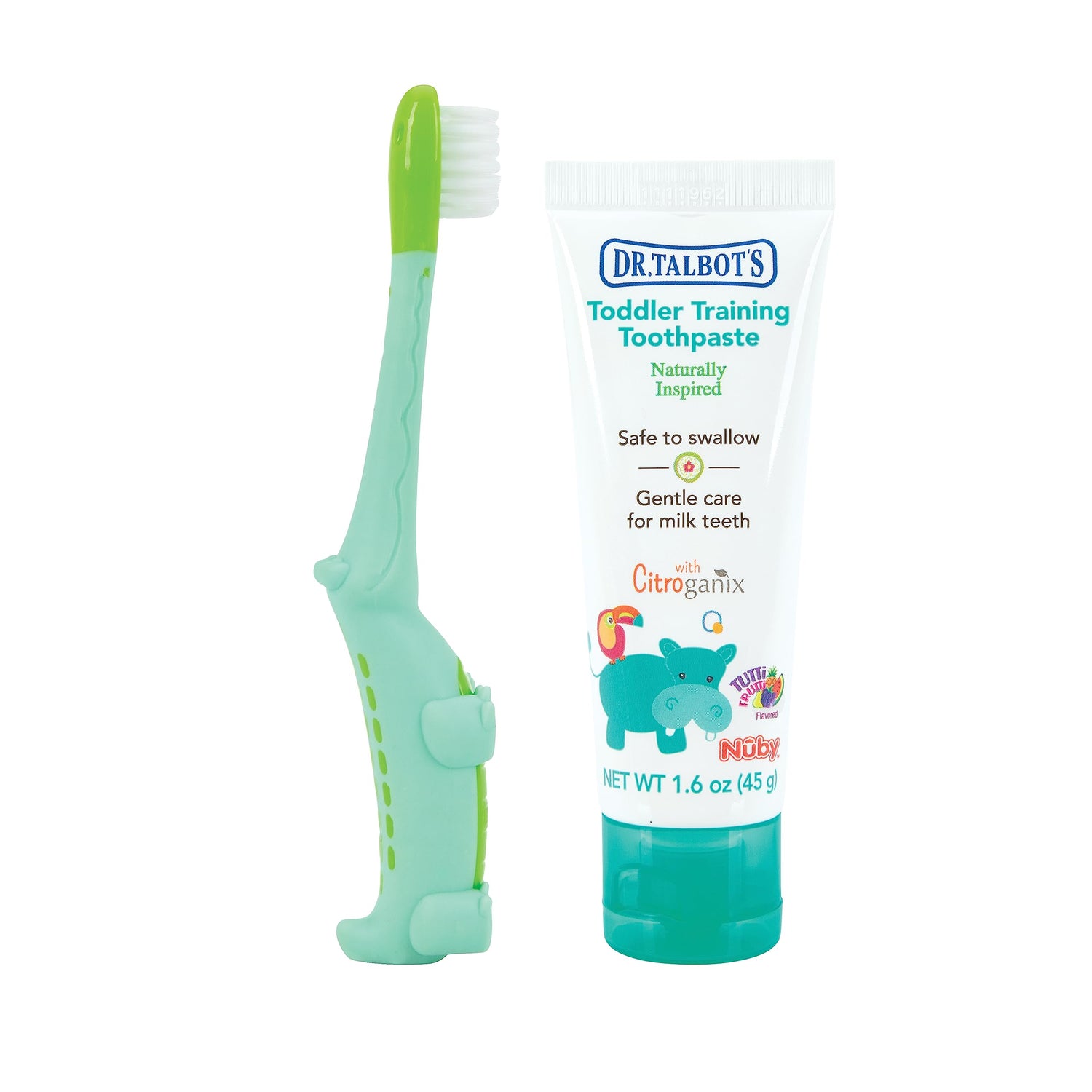Teething Tips For Parents

Extra Comfort and Cuddles
Teething isn’t just about sore gums—it also affects your baby’s mood and sense of security. During this stage, your little one may become clingier or fussier than usual. Offering extra cuddles, rocking them to sleep, or sitting quietly together can go a long way in easing their stress. Sometimes the best teething remedy isn’t an object—it’s you. By providing calm and comfort, you’re teaching your child that they can rely on you when life feels tough.
Gentle Gum Massage
Your touch is powerful when your baby is uncomfortable. Using a clean finger, gently massage your baby’s gums in small, circular motions. This simple act relieves pressure, increases circulation, and provides comfort. While it may seem small, this kind of physical care also reassures your baby, helping them feel calm and supported. For dads especially, gum massage is a hands-on way to step in and comfort your child during tough moments.

Keep It Cool for Relief
One of the simplest and most effective ways to ease teething pain is with something cold. Chilled (but not frozen) teething rings, silicone toys, or a damp washcloth placed in the fridge can provide safe relief for sore gums. The cool temperature numbs discomfort and gives your little one something soothing to chew on. Avoid freezing items, as they can become too hard and damage sensitive gums. Keeping a few clean teethers in the fridge means you’re always prepared when fussiness strikes.
Go-To Guide: Baby Nutrition, Health & Eco-Friendly Care
Feeding by Age: A Quick Overview
| Baby's Age | Feeding Needs | Nutrition Tips |
|---|---|---|
| 0–6 Months | Breast milk or formula only | Feed on demand; no solids yet |
| 6–8 Months | Add solids 1–2x/day | Start with iron-rich and soft organic purees |
| 8–10 Months | 2–3 meals/day + breast/formula | Include soft finger foods, grains, fruits, veggies |
| 10–12 Months | 3 meals + 1–2 snacks | Transition to more textures, balanced mini-meals |

Begin Healthy Oral Care Early
Teething is the perfect time to start building dental care habits. Once the first tooth appears, use a soft-bristled baby toothbrush and a tiny smear of fluoride toothpaste twice a day. Establishing a brushing routine early gets your child used to the process and helps protect their new teeth from cavities. Making brushing playful—through songs, games, or modeling—can also turn it into a positive experience. Starting early not only protects your toddler’s smile but also sets the stage for lifelong oral health.
Cherishing Baby’s First Tooth
Your baby’s first tooth is more than a milestone—it’s a memory worth keeping. Many parents choose to save that tiny tooth as a keepsake, storing it in a special box or locket to mark this stage of growth. It’s a simple yet meaningful way to capture a moment that passes quickly, reminding you of your child’s journey from babyhood to toddlerhood and beyond.

Keepsakes That Last a Lifetime
Baby teeth may be small, but they carry big memories. Keepsake boxes, personalized containers, or tooth fairy pouches allow parents to hold on to these milestones forever. For dads and moms alike, collecting baby teeth isn’t just about storage—it’s about preserving a story, a reminder of growth, and a treasure to look back on as your child grows older.
Age-Appropriate Teething Snacks
For older babies and toddlers, safe and healthy snacks can help soothe gums while encouraging good eating habits. Chilled fruit slices (like banana or apple), yogurt, or soft veggies can offer cooling relief while giving your child new tastes to explore. Always supervise closely and make sure snacks are cut into safe sizes to prevent choking. This stage is not just about comfort but also about introducing textures that will help with chewing skills as more teeth come in.
-

Building Healthy Brushing Habits
Toddlers may resist brushing at first, but consistency makes all the difference. Start by brushing twice a day with a soft-bristled toddler toothbrush and a tiny smear of fluoride toothpaste. Keep the routine fun—sing songs, let your toddler choose their toothbrush color, or make it a game. When brushing becomes part of their daily routine, toddlers learn that caring for their teeth is just as normal as eating or sleeping. These small steps now set the stage for a lifetime of healthy dental habits.
-

Making Brushing Fun for Toddlers
Tooth brushing doesn’t have to be a battle—it can be playtime too. Encourage your toddler by brushing alongside them so they can copy you. Use silly faces, playful counting, or let them brush your teeth first before you brush theirs. Turn it into a positive, shared experience instead of a chore. With patience and creativity, dads and moms can transform brushing into a bonding moment that teaches toddlers the importance of keeping their smiles bright.
-

Toddler Independence with Brushing
Toddlers love to feel in control, and tooth brushing is a perfect way to encourage independence while still keeping their teeth clean. Give your toddler their own toothbrush to practice with, and then follow up with a “parent brush” to make sure everything gets cleaned. This approach gives them ownership, keeps the routine fun, and ensures their teeth stay healthy. Over time, brushing together becomes both a teaching moment and a bonding routine.









